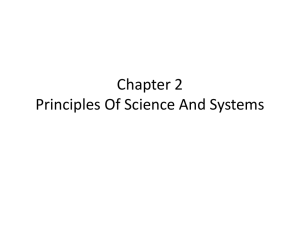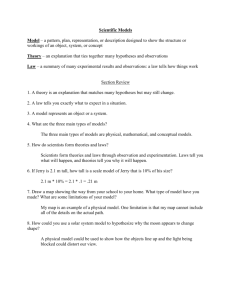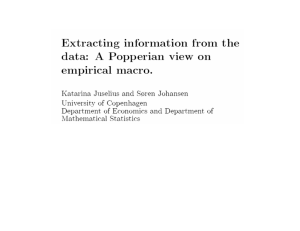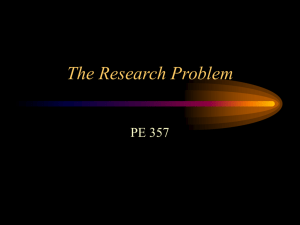File
advertisement
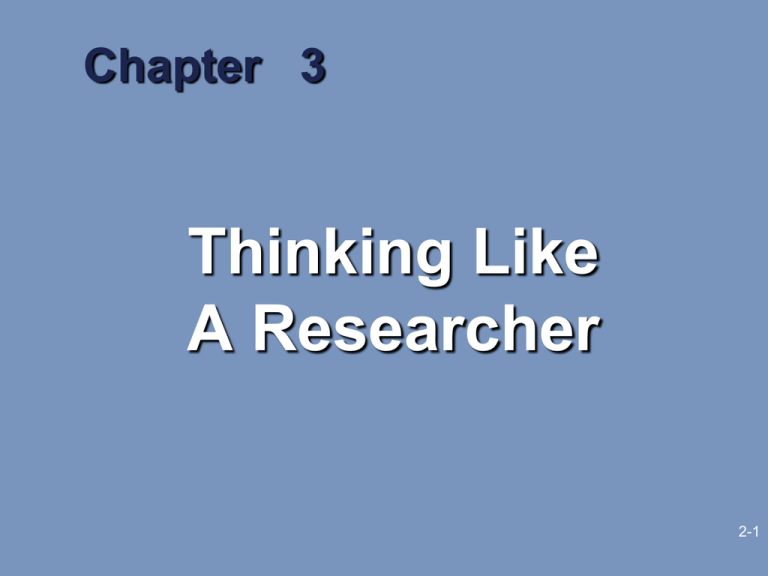
Chapter 3 Thinking Like A Researcher 2-1 Researchers • • • • • • • Encounter problems State problems Propose hypotheses Generate outcomes Formulate hypotheses Conduct empirical tests Draw conclusions 2-2 Curiosity is necessary to be a good business researcher “A scientist is a man with a problem or he is nothing” Examples of research problems: – Why do businesses that uses TQM make more profits than those that do not use TQM? – Why do business firms lose their competitive advantage? – Does globalization destroy local industries in developing countries? – Why does Dubai attract so much foreign investment? 2-3 Deductive and Inductive Research Induction Concept You start with your own experience and then generalize a rule. Example The last ten times I touched the hot stove I burned my hand. Touching hot stove will burn my hand Deduction You start with a rule and then apply it to new situations. The law of gravity says that what goes up must come down, so I bet if I throw this ball up it will fall back down Deductive and Inductive Research Induction Deduction Business Example In Microsoft, satisfaction is Technology is mainly influenced by accepted because promotion. In Sun Micros ease of use and company, satisfaction is usefulness. Mobile is mainly influenced by a technology. Mobile promotion. In IT is accepted because companies, satisfaction is ease of use and mainly influenced by usefulness. promotion Deductive and Inductive Research Definition Induction Deduction Observations and Conclusion follows conclusions are related and logically from available connected to make theories facts Characteristics Purpose Research comes before theory Works from the " specific" to the " general” Down-top reasoning Generate theories Theory comes before research Works from the "general" to the "specific” Top –down reasoning Testing theories Tracy’s Performance 2-7 Why Didn’t Sales Increase? Deduction 2-8 Research Cycle or Process Problem Definition Research Findings Literature Review Data Analysis Formulation of Hypotheses Data Collection Measurement Language of Research Success of Research Clear conceptualization of concepts Shared understanding of concepts 2-10 Clear concept Running Walking A man passing Crawling Hopping 2-11 Operational Definitions How can we define the variable “class level of students”? • • • • Freshman Sophomore Junior Senior • • • • < 30 credit hours 30-50 credit hours 60-89 credit hours > 90 credit hours 2-12 What Is A Variable? Act Event Variable Characteristic Trait 2-13 Types of Variables Dichotomous Male/Female Employed/ Unemployed Discrete Ethnic background Educational level Religious affiliation Continuous Income Temperature Age 2-14 Independent and Dependent Variables Independent Variable (IV) Dependent Variable (DV) • A Predictor • A Cause • An Antecedent • • • • • An Effect A Response A Consequence An a result An outcome 2-15 Moderating Variables (MV) • Job Satisfaction (IV) will lead to increased Worker’s Productivity (DV), especially among Younger Workers (MV). • Trust in Organization (IV) leads to Acceptance of New Technology (DV), especially among Male Employees (MV) 2-16 Hypothesis Formats Descriptive Research Question • Our potato chip market share stands at 13.7%. • American banks face budget difficulties. • What is the market share for our potato chips? • Are American banks facing budget difficulties? 2-17 Relational Hypotheses Correlational • Young women (under 35) purchase fewer units of our product than women who are older than 35. • The number of Cola cans sold varies directly with the period of season. Causal • An increase in family income leads to an increase in the percentage of income saved. • Loyalty to a grocery store increases the probability of purchasing that store’s brands. 2-18 The Role of Hypotheses Guide the direction of the study Identify relevant facts Suggest most appropriate research design Provide framework for organizing resulting conclusions 2-19 Characteristics of Strong Hypotheses Adequate A Strong Hypothesis Is Testable Good writing 2-20
